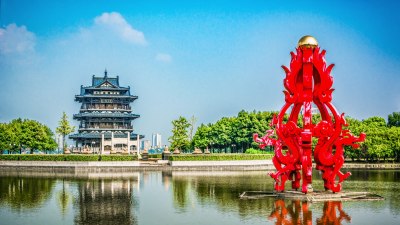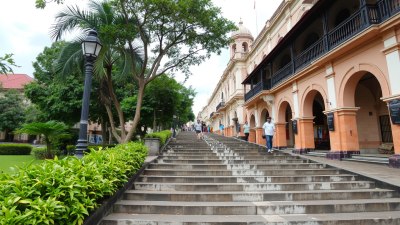How to Experience a City’s History Beyond the Tourist Attractions
Discover unique ways to connect with a city's history beyond typical tourist hotspots.

Every city holds stories woven into its streets, buildings, and culture. While popular tourist attractions provide a glimpse into a city’s history, they often reflect a polished, sanitized version of the past. To truly appreciate the rich tapestry of a city’s heritage, one must wander off the beaten path and delve deeper into its historical veins. This guide explores ways to experience a city’s history beyond the tourist attractions, offering immersive and authentic perspectives that are often overlooked.
1. Engage with Local History Through Community Events
One of the most effective ways to understand a city’s history is through its community events. Local festivals, celebrations, and historical reenactments often reflect significant events in the community’s past. These occasions typically showcase traditional food, music, and customs that have been preserved or revived over generations. Attending such gatherings offers firsthand insight into the city’s story from the perspective of its residents, often without the filters that guide traditional tourism.
2. Visit Lesser-Known Museums
While iconic museums often attract throngs of visitors, smaller, lesser-known museums can reveal astonishing aspects of a city’s history. These venues may focus on specific themes—such as the history of a particular neighborhood or the contributions of local cultures to the city’s development. Oftentimes, the curators are passionate locals who provide passionate narratives that bring history to life. Explore museums that may not show up on popular tourist guides to uncover hidden treasures and personal stories that shape a city's identity.
3. Take Guided Historical Walks
Consider joining guided historical walking tours that focus on narratives often ignored by standardized itineraries. These tours can concentrate on various aspects of history, such as architectural styles, local folklore, marginalized communities, or even the city’s industrial past. Local guides can often share unique anecdotes and insights that highlight the complexities and quirks of a city's history. If guided tours aren’t available, creating your own itinerary with resources from local libraries or websites can also lead you to significant and interesting sites.
4. Explore Offbeat Neighborhoods
Many travelers stick to popular neighborhoods filled with shops, restaurants, and attractions. However, venturing into offbeat neighborhoods may yield fascinating stories and historical insights. These areas often retain much of the local character and history that newer developments have erased or commercialized. Walking through older districts can unveil unique architecture, historical markers, and local testimonials that tell of the community’s evolution. Look for neighborhoods that are known for their artisan shops, cultural centers, or local markets for a more authentic experience.
5. Connect with Local Historians or Authors
Establishing connections with local historians, authors, or cultural organizations can greatly enrich your understanding of a city’s past. Attend lectures, book readings, or book signings to engage with experts who have researched the city’s history extensively. These knowledgeable individuals can provide unique perspectives and may even lead to private tours or discussions that uncover hidden layers of the city’s heritage.
6. Visit Historic Cemeteries
Cemeteries are often overlooked as sites of historical significance. However, they can provide rich insights into a city’s past, reflecting its cultural, social, and economic history through the stories of its inhabitants. Walking through graves and monuments may reveal notable figures or events and, importantly, the evolution of the local community. Many cemeteries also provide guided tours that detail the history of those buried there, adding a layer of depth to your historical exploration.
7. Experience Culinary History
Food is a powerful vehicle for understanding a city’s history and cultural evolution. Engaging with traditional cuisines can lead to fascinating stories about immigration, trade, and social customs. Dining at local establishments that have been family-owned for generations or attending cooking classes focused on region-specific cuisine allows a deeper appreciation of local ingredients and culinary traditions. Many cooking schools also provide insights into historical practices and the city’s agricultural past, creating a tasty bridge to the past.
8. Attend Local Theatre or Performances
The performing arts often reflect societal changes and historical narratives. Local theatre productions, storytelling festivals, or folk music performances can shed light on the city’s cultural history. Engaging with local artists and performers promotes an understanding of who the city was, how it has evolved, and how its inhabitants express their histories. Look for venues that focus on local talent, and immerse yourself in the storytelling traditions that have shaped the community over time.
9. Seek Out Historical Landmarks and Sites
Beyond mainstream attractions, many historical landmarks may not be well advertised but are imbued with significance. Sites that commemorate particular events, prominent local figures, or special moments in history can often be found among the quietest parts of the city. Local municipalities usually provide maps or brochures highlighting these sites, which, although less frequented, can share powerful narratives with visitors. These may include plaques, monuments, battlegrounds, and remnants of significant events.
10. Capture Stories From Locals
One of the richest aspects of exploring a city's history is hearing firsthand accounts from its residents. Engaging in conversations with locals at cafes, markets, or public transport can lead to enlightening stories and insights. Individuals who have lived in the city for decades carry invaluable tales about its transformation, triumphs, and challenges. Consider carrying a small journal or a recording device to document these oral histories. These narratives contribute greatly to a comprehensive appreciation of the city’s past.
11. Investigate the City’s Archives and Libraries
Many cities have archives and libraries that house fascinating collections of historical documents, photographs, maps, and records of all kinds. Spending time in these institutions can uncover stories of the past that are not available elsewhere. Many archives offer workshops, lectures, and guided tours that can further enhance your understanding of the material. Librarians and archivists often have extensive knowledge of the collections and can guide you toward treasures that align with your interests.
12. Utilize Technology and Apps
Leverage technology to enhance your historical exploration. Several apps and websites provide augmented reality features that bring historical narratives to life as you visit specific locations. Many cities have developed their own apps that guide you through historical districts with context and background that may not be readily available. These resources can make your journey immersive and engaging, helping you visualize the past while you roam the present.
Experiencing a city's history beyond the tourist attractions requires curiosity, creativity, and an open mind. By engaging with local communities, immersing yourself in unique events, and seeking out hidden gems of history, you can develop a meaningful connection to the place you are exploring. The stories of a city's past are not just reflected in museums and monuments; they are alive in the streets, conversations, and culture of the people who inhabit it. Embrace the journey beyond the conventional tourist path to uncover the true essence of a city's history, and allow yourself to be inspired by the myriad of stories waiting to be discovered.











